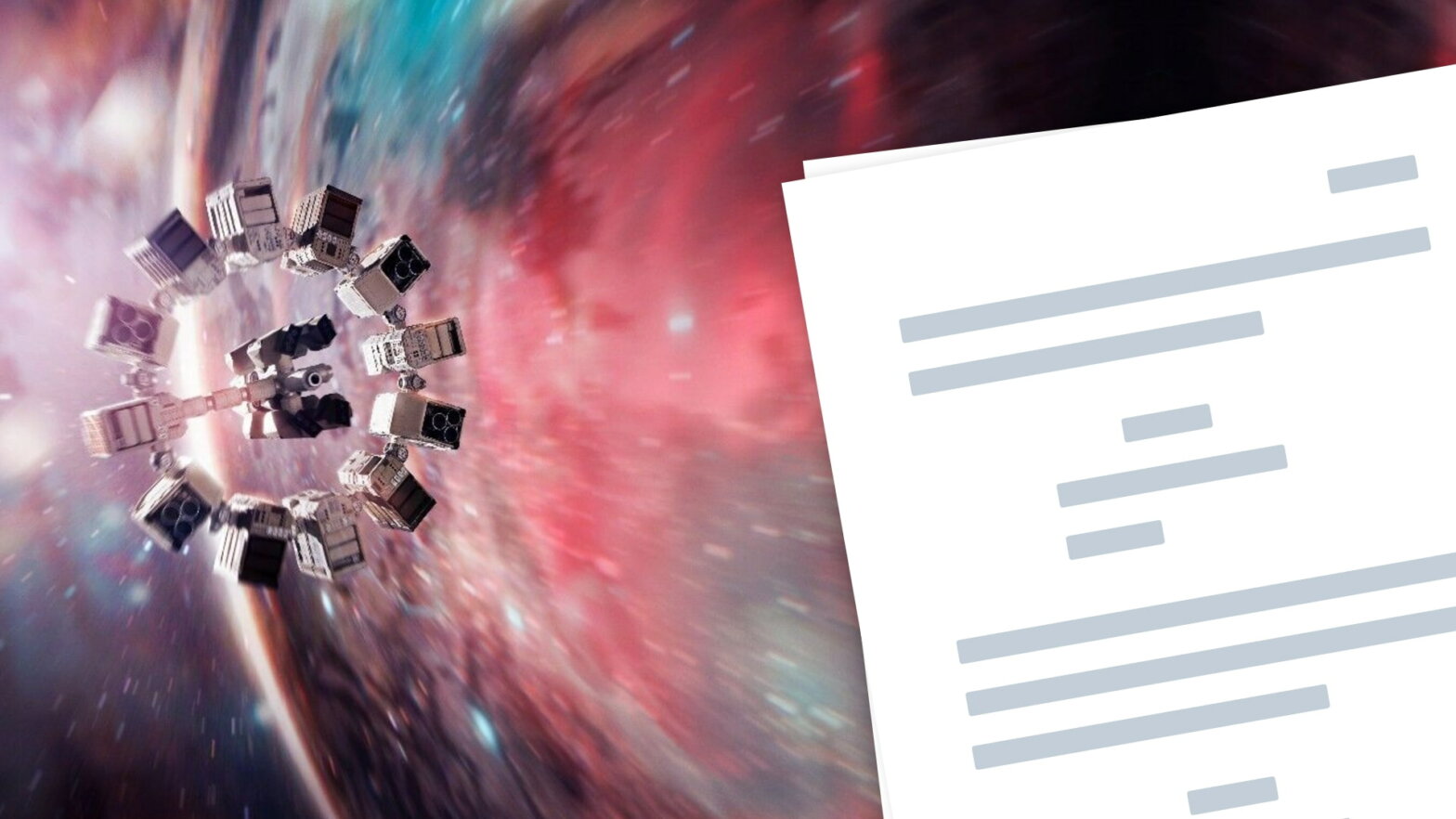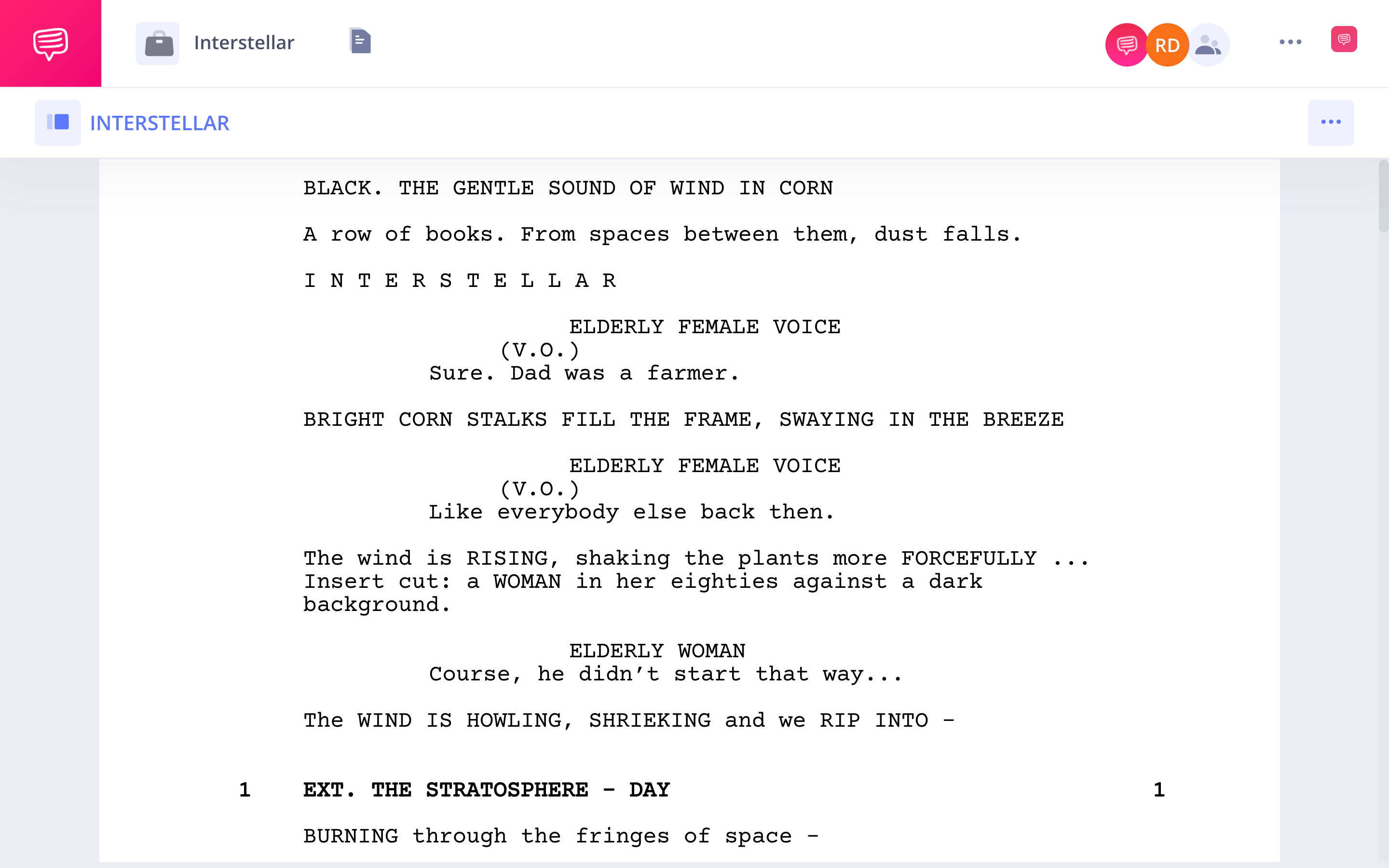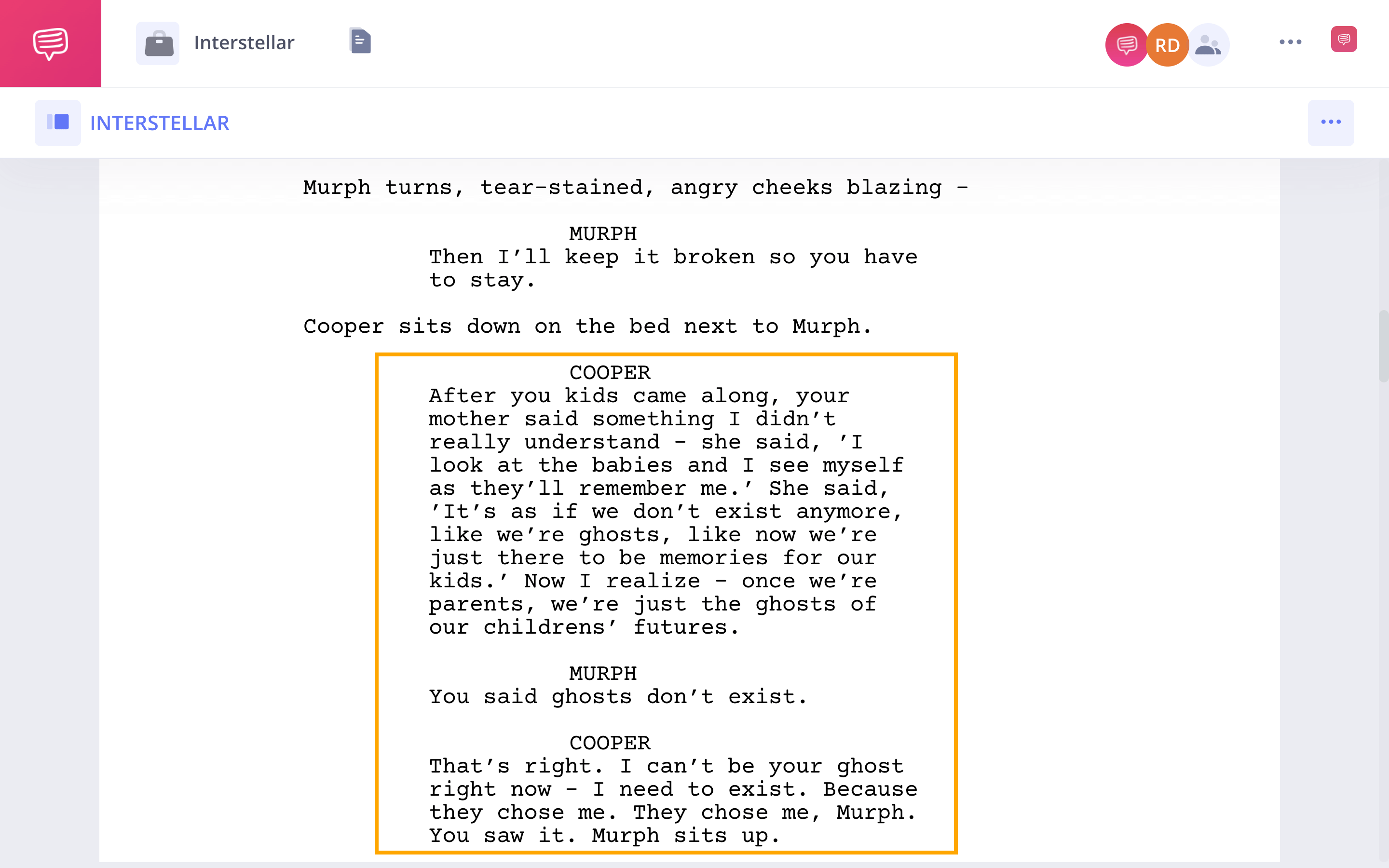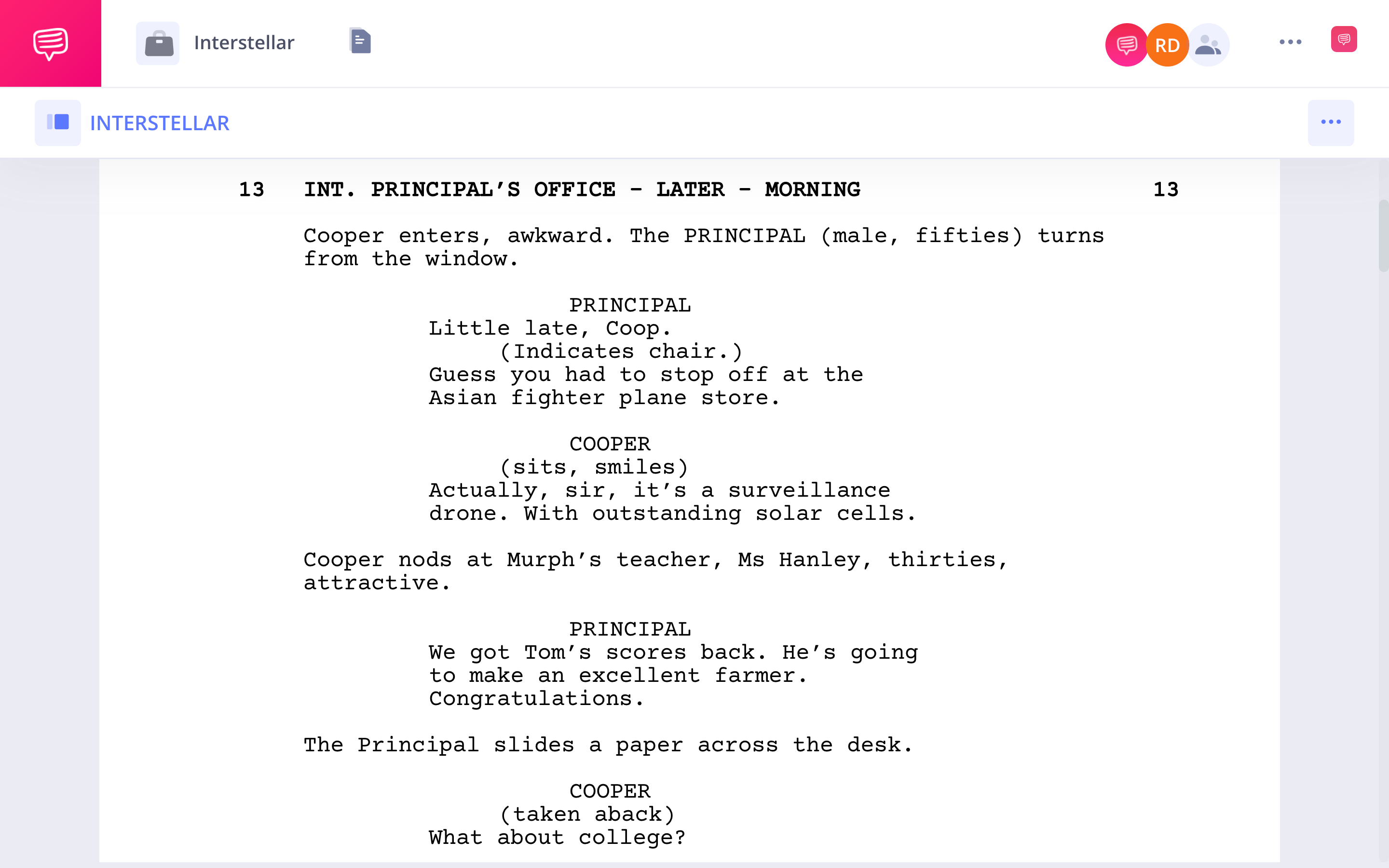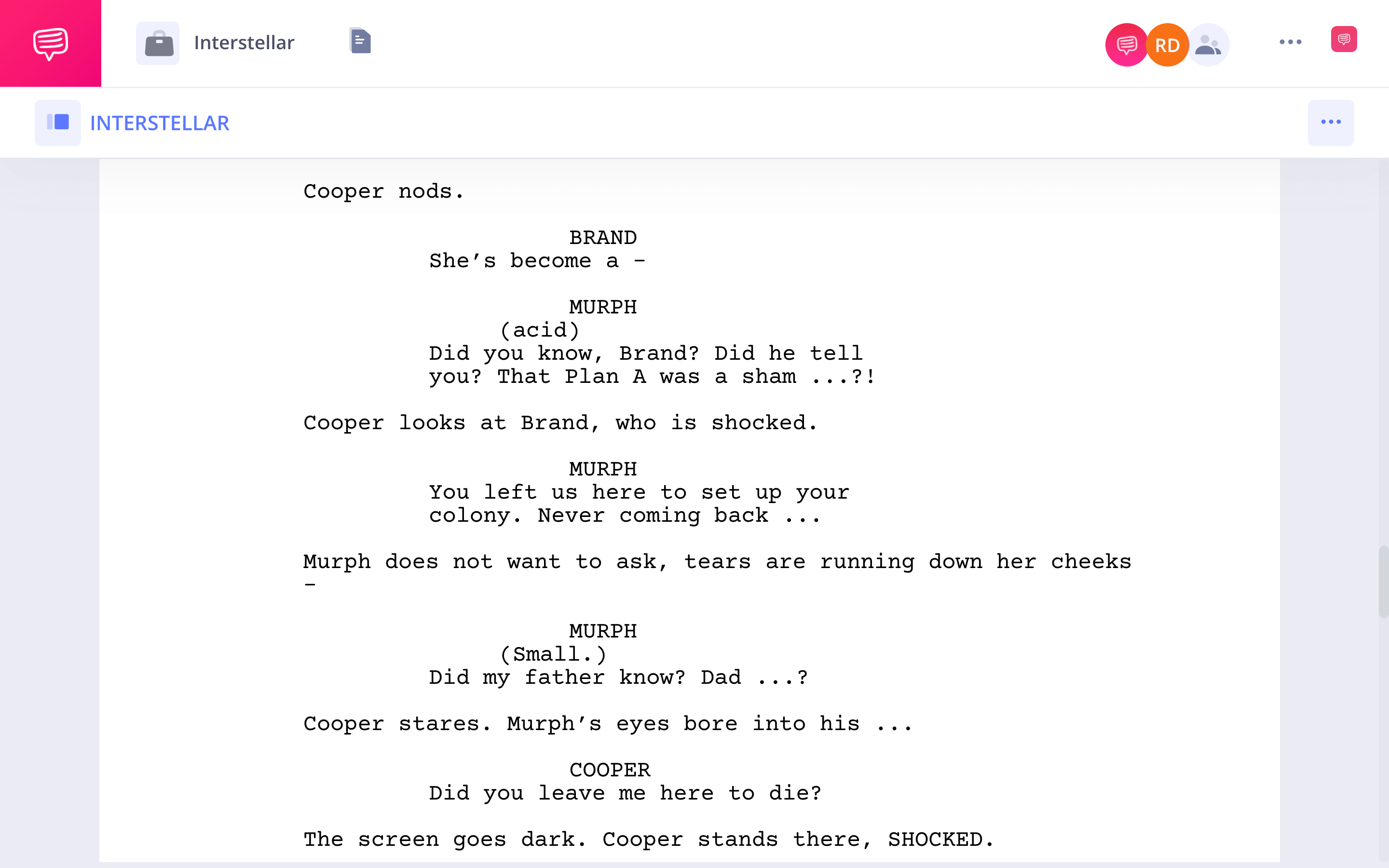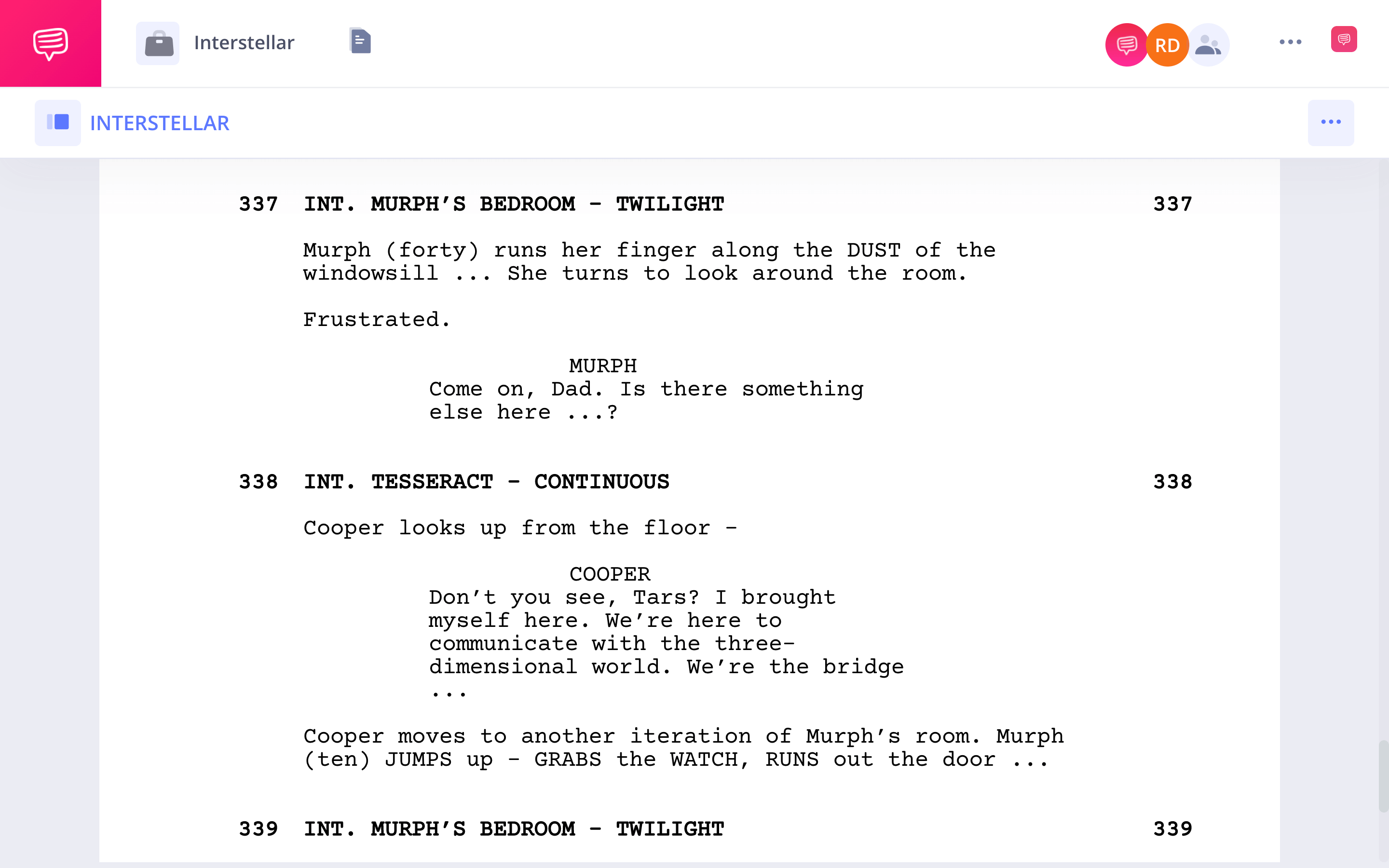It’s encumbered on us, as filmmakers to try and push whatever boundaries we can, and not be beholden to a theoretical rule set.” Christopher Nolan embodies this mantra, and Interstellar is a shining example of how. Despite its detailed intricacies of space and time, the screenplay for Interstellar proves that story and character come before all else. Read on to learn how Nolan puts the heart of his plot first.


WHO WROTE Interstellar SCRIPT?
Written by Christopher Nolan & Jonathan Nolan
Christopher Nolan is known for mind-bending films like Memento, The Prestige, and Inception, Christopher Nolan’s name is synonymous with intricate story-telling. Having literally made films since the age of 7, Christopher has mastered micro-budget and massive blockbuster projects alike.
A prolific story-teller in his own right, Jonathan Nolan has penned a number of projects, from short stories (like the source material for Memento, “Memento Mori”) to episodic screenplays (“Westworld”). Like his older brother Christopher, he was an English major in college, and together, they have co-written projects like The Prestige, The Dark Knight, and Interstellar.
STORY BREAKDOWN
STRUCTURE OF INTERSTELLAR SCREENPLAY
Here is the story structure for Interstellar screenplay:
Exposition
Various images inform us that the story takes place in the not-so-distant future. There is a lack of everyday activities like attending large baseball games, the dust-covered planet is nearly devoid of food, and society desperately searches for more farmers; the human race verges on extinction.
Inciting Incident
Cooper and Murph notice the dust falling in Murph’s room appears to form a barcode-like pattern on the floor. Cooper discovers the barcode is actually binary code which corresponds to a specific location.
Plot Point One
Cooper learns about NASA’s mission to save the human race, and decides to take it on, and leave his family behind for the foreseeable future.
Rising Action
Cooper, Brand, and Doyle visit the water planet, where they nearly escape a giant tidal wave. Due to how time dilates on the this planet, they were there for 23 years — Cooper has essentially missed his children’s whole lives.
Midpoint
Dr. Mann tries to kill Cooper and maroon the crew of the Endurance because, as the crew learns, Plan A was a sham.
Plot Point Two
Cooper and Brand decide to slingshot around Gargantua and shed unnecessary shuttles on the Endurance to save fuel. Cooper reveals that there isn’t enough fuel to save his shuttle, and detaches his shuttle, sending himself into Gargantua.
Build Up
Cooper finds himself in a tesseract, where he finds he is able to interact with Murph’s childhood bedroom.
Climax
Cooper realizes he can communicate with TARS as well as transfer the quantum data of the blackhole to Murph in Morse code through the watch on her bookshelf. Murph is now able to save humanity and the tesseract collapses.
Finale
Cooper and Murph reunite on Cooper Station, where a portion of humankind now lives. Murph tells Cooper to go find Brand, who is on the last planet they were to visit.
Interstellar Script Takeaway #1
Interstellar Theme
In the Interstellar script, the Nolans not only allow theme to guide the characters and story, but they weave the theme into the screenplay’s plot points. In this case, the theme is that love can transcend time and space, and while love may not be something typically associated with science (or a science-heavy story), several moments in the script show that love is quantifiable.
We imported the Interstellar screenplay into StudioBinder’s screenwriting software to pinpoint these moments.Interstellar Love Theme • Read Full Scene
The Nolans introduce Interstellar’s theme partially by way of a motif: ghosts. This motif is emphasized in one scene (and its counterpart) in particular, and that is when Cooper is about to leave on his mission.
The idea of ghosts is mentioned a number of times in the Interstellar script, especially as it pertains to parenthood. And the bookended scenes of Murph’s ghost in her bedroom emphasize the parent-child connection that the ghost-Murph communication is revealed to be.
In the scene above, we actually see some irony at play because of course, we later learn Cooper became a ghost for Murph in more ways than one. Not only was he in fact the “ghost” communicating with her through sand, books, and his watch, but he did become a ghost in Murph’s life by missing a large portion of it. In this scene, Cooper says he can’t be her ghost, but in reality — and this could even be a play on Murph’s name — Cooper was her ghost all along.
Interstellar script breakdown • Murph realized Cooper was her ghost
Cooper’s love for Murph transcended time and space because he was able to communicate across a threshold of sorts (as a “ghost”), never loving her less than the day he left her behind. Cooper’s love propelled him through his mission, and what started as a childish annoyance was redefined in the script as their transcendent connection that allowed them to save humanity.
Related Posts
Interstellar Script Takeaway #2
World-Building in Interstellar
The Interstellar script leaves little to the imagination as far as setting the scene goes. Dialogue and imagery work together to make this world vivid. That being said, the descriptions aren’t gratuitous either. Every detail builds to the “punchline,” giving the reader all the necessary information only as much as it is needed. We can especially find this in a key expositional scene: Cooper’s parent-teacher conference.
Parent Teacher Conference Scene • Read Full Scene
The dialogue in the parent-teacher conference scene is particularly telling, both from the excerpt above and throughout the rest of the scene.
On the one hand, there is specific dialogue that lays out the facts: “the university only takes a handful; they don’t have resources” and “there’s no more armies.” The Nolans dole out bits and pieces of what the world is like without any minced words through dialogue like this, and immediately give a sense of how the world has changed in this not-so-distant future.
To balance this out, the Nolans show trust in their readers and give some dialogue more subtext rather than specificity. This page starts with the principal’s line, “[Tom’s] going to make an excellent farmer. Congratulations.” The implication is that being a farmer is a coveted profession in this world.
Check out how the conversation and world-building truly unfolds in the scene from Interstellar below.
Parent-teacher conference from Interstellar
World-building in the Interstellar script consists of dialogue just as much as lines of action, all of which allow for a cohesive mood throughout the story. The Nolans master a tricky balance of informing and entertaining the readers, preparing them to enjoy and understand the story at a deeper level.
Interstellar Script Takeaway #3
Interstellar characters make choices
A number of characters in Interstellar exhibit tell-tales signs of well-crafted drama: they are at a crossroads. One question with life-altering outcomes is: do I try save the world or try to save my family? While of course this question is almost verbatim asked in the film as it pertains to Cooper, a number of characters must process similar questions or the consequences of Cooper’s “choice.” Below, we’ll dive into how Murph works through the conflict of her father’s situation.
Murph Confronts Brand • Read Full Scene
In this particular scene, Murph has already realized that Plan A was a sham. On his death bed, Professor Brand (Michael Caine) clarified for Murph that Cooper would not return, and now Murph allows herself to become unglued. She begins the message with news of Professor Brand’s death and instead of leaving room for grief and compassion, she decides to use Brand (Anne Hathaway) as a means to assuage her own anger and hurt.
What’s more is that a lot of this pain is tied into her belief for the future as well as the belief in her dad. Through this pain, which builds over the years (especially as her older brother refuses to acknowledge her perspective and expertise), she fuels her own need to save humanity, not allowing her pain to slow her down. All this being said, while she feels her pain immensely, she allows herself to trust him, as particularly exhibited in the moment below.
Murph and Cooper Communicate Through the Tesseract • Read Full Scene
Murph continues to try to solve the equation that may lead to salvation, as she believes that despite Professor’s Brand’s lie, solving the equation is possible. Ultimately, Murph is led back to where it all began, her bedroom, keeping her love for her father close even if her frustration towards him runs parallel.
In this scene, Murph’s anger is entirely absent. She and her father share hope for what the future can be, and Murph can trust that in and of itself. Murph is therefore able to hold two truths at once: she is upset with her father, but she can love him very much at the same time.
The Interstellar script is a complex work and is clearly indicative of Christopher Nolan's writing process. It layers the character make-up and the circumstances of the world to serve its theme of love as a quantifiable force. Not strictly science-focused nor a character-study alone, Interstellar combines the two for an emotional story of connection with the added thrill of an action-packed sci-fi film.
Related Posts
UP NEXT
Read and download more scripts
Interstellar is full of emotional peaks as well as detailed, scientific world-building. If you want to continue reading screenplays, we have similar titles like Blade Runner 2049, The Martian, and Tenet in our screenplay database. Browse and download PDFs for all of our scripts as you read, write and practice your craft to become the next great screenwriter.
